So, a few people down in the general vicinity of Washington, DC, are bent on furthering this narrative that Al Horford is a cheap-shot artist who deliberately undercut Markieff Morris, either with the specific intent to injure, or with a reckless disregard for Markieff’s safety.
As much as I’d like to say Al Horford is completely innocent in this, and did nothing wrong whatsoever, he was quite fairly called for a foul on this play.
But before we get out the pitchforks and torches, let’s take a frame-by-frame look at what happened.
| Al Horford recognizes a blown assignment and rushes to close out. Markieff prepares to take a textbook jump shot. |  |
| Markieff, again, shows textbook form on his shot. Horford is bringing his left foot forward while closing out. | 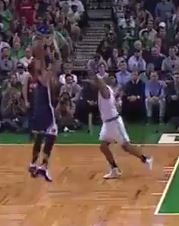 |
| Here’s where things start to get messy. Markieff sees Horford closing out and begins to kick his right leg out to draw contact. There is nothing unusual or unsportsmanlike about this move. You can’t say that Markieff is ‘asking for it’ by attempting to draw contact. Horford has left the ground and is jumping to contest the shot. | 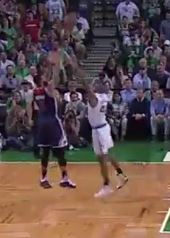 |
| And this is when disaster is all but inevitable. Notice that, as a result of his decision to draw contact, Markieff’s weight has shifted and is no longer directly over his left ankle. If he were able to land flat footed, this would probably not be a problem. He could possibly stumble or fall backwards. Instead, he is clearly going to land on Al Horford’s foot. Horford, despite jumping after Morris is going to land before him. | 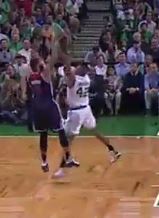 |
| Here’s where the injury occurs. Rather than landing flat footed, Markieff’s foot is at an angle, already stretching the joint’s sideways mobility to near its limits. Now, as shown in the picture below, Markieff’s center of gravity is even further to the left of his ankle. What is going to happen is his ankle is going to give way when his leg shifts farther to the left to reposition itself under his center of gravity. | 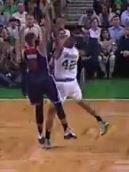 |
| This larger photo shows the approximate location of Markieff’s center of gravity, and the approximate angle of his left leg. Notice that his left leg is not in line with his COG. Instinctively, the body’s balance reflexes will move Markieff’s leg to the left. However, because of how his ankle is planted, the leftward deflection which would have occurred when his leg repositioned itself has already occurred. | 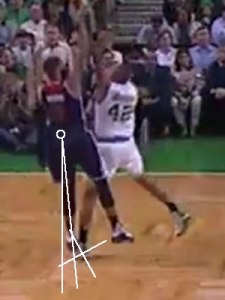 |
| Here, reflexively, Markieff’s left leg has moved to keep him from falling over, Markieff’s COG is once again between his legs. However, in at least one axis, it also appears to be directly over his already hyper-extended ankle. That’s not good.
However, notice that Al Horford’s full weight is on his left foot. You could argue that Horford was intentionally trying to undercut Markieff here, but compare Horford’s position with that of the defender in this FIBA explainer, in which the defender has clearly extended his right foot while his weight is primarily on his left, and where the defender is not overreacting to a missed assignment, but is facing up the shooter in textbook fashion. |
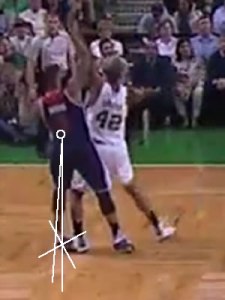 |
The bottom line here is that not only did Al Horford misjudge his jump to contest resulting in what is inarguably a foul, Markieff increased his risk for injury by attempting to draw contact on a play that would have resulted in a foul anyway.
Ultimately, there does not need to be intent to injure assigned to Horford, nor is Morris to blame because he made what is by now a well-accepted basketball play (whether it should be or not is a whole other matter).
Not every injury is the result of malicious intent, even when the play that results in an injury has a foul called on it.
Add The Sports Daily to your Google News Feed!